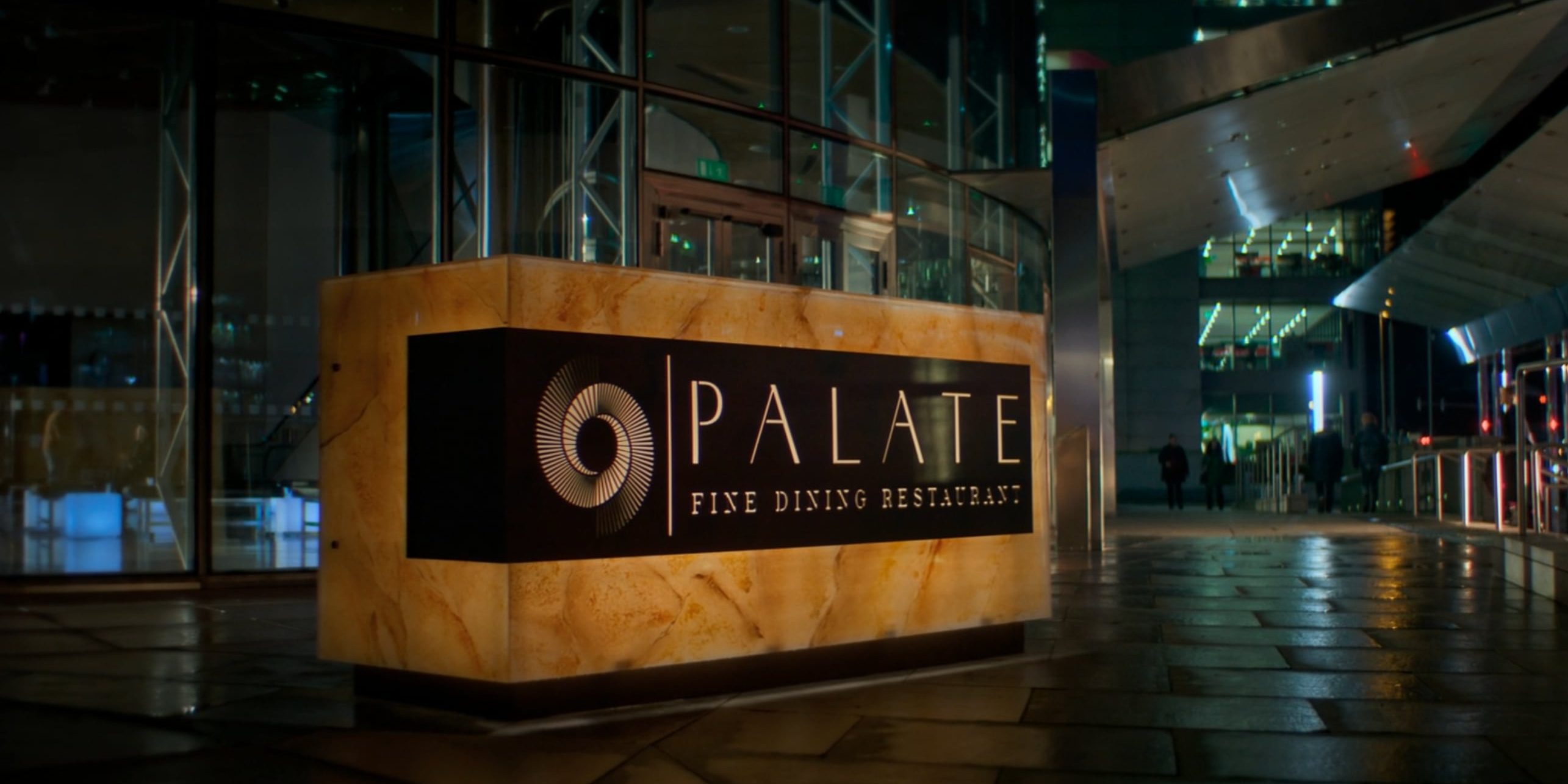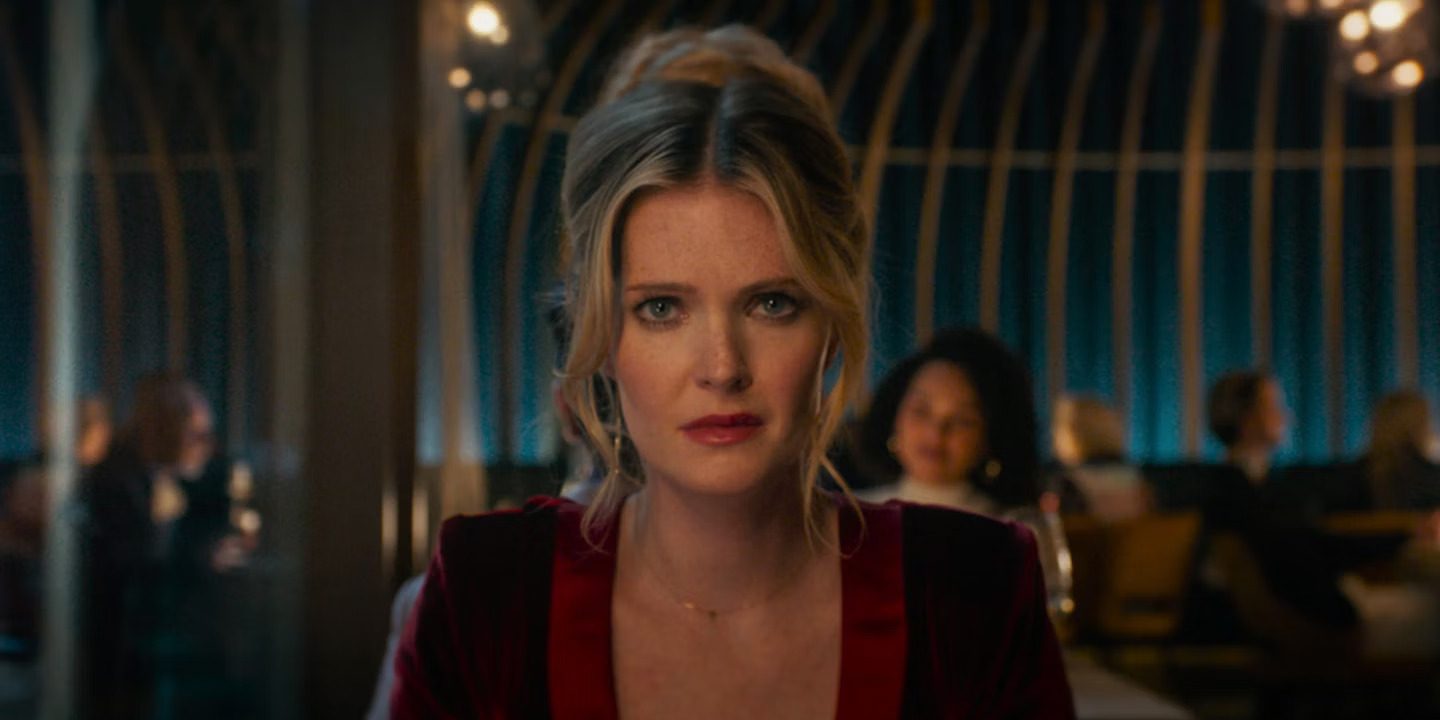In Christopher Landon’s ‘Drop,‘ a young windowed mother, Violet, heads out for a romantic evening with a photographer named Henry at a high-end restaurant, Palate. While the date begins smoothly, it quickly spirals into chaos when Violet receives cryptic messages on her phone threatening her to kill Henry or else her son, Tobias, will be killed along with her babysitter sister, Jen. Subsequently, the protagonist is forced to navigate the pressures of her situation in secret as she tries her best to escape without having to become a murderer herself. The entire narrative largely unfolds in the confines of Palate, adding to the tense highwire premise of the movie and the main character’s circumstances. As a result, it plays an equally vital role as any character within the project, bringing a sense of familiarity within the environment.
Palate is a Fictional Restaurant Built From Scratch
Although the restaurant Palate serves as the central location of ‘Drop,’ it is a fictional locale created by scriptwriters Jillian Jacobs and Chris Roach. They were responsible for narratively constructing the posh eating place. However, the restaurant was physically brought to life by the production team, specifically Susie Cullen, the production designer. The movie was primarily filmed in a studio environment in Ireland, namely the Ardmore Studios in Bray, County Wicklow. Cullen was tasked with building the intricate and lavish interiors of Palate, an upscale Chicago restaurant, within Ardmore Studios. The designing process was meticulously undertaken, allowing the creative team to visualize the exact movements of the film’s characters within the functional set.

In an interview, Cullen explained, “When a story unfolds primarily in one space, that location becomes a character in itself. We wanted the restaurant to feel sophisticated yet subtly menacing, a place that could be luxurious one moment and a trap the next.” The entire restaurant embodies the idea of a beautifully detailed space that ends up locking the characters in for the majority of the film. Director Wes Craven also chimed in on the matter by highlighting Cullen’s work and stating that the restaurant’s design helps illustrate the movie’s emotional subtext. He wanted to depict the set/restaurant as a “gilded cage” with gold bars rising up around the space, exuding a feeling of confinement and isolation, especially when the camera is directed at Violet’s desperate movements.
Once the set was in place, Landon and his team worked closely on establishing a timeline for the events inside the restaurant and arranging where specific characters might be seated. Despite the fact that the movie largely focuses on Violet’s struggles, having a detailed plan for the other characters within the shot allows for more realism and authenticity. “We had to know, what course were they on? What were they eating? When were they going to get up? Were they getting up to go to the bathroom? Every single table had to get mapped out perfectly so that our continuity always matched,” Landon said. Thus, a massive amount of effort went into capturing the essence of a real restaurant while constructing Palate from scratch, which adds to its prominence even though it remains fictional in conception.
Read More: Is Drop Based on a True Story?


